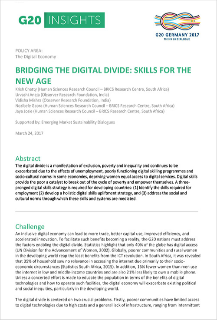Brahmaputra, with its turbulent and magnificent flow across China, India and Bangladesh, echoes, in many ways, literally hundreds of strikingly controversial narratives common to other contested river basins like Mekong and Indus. The ethical justification proposed by the riparian countries to their righteous claim over the river canvasses the indescribable ’idealism’. In times like this, where the complex heterogeneous river systems are treated as a homogeneous national security issue, pacifism and prohibitions have become an apocryphal fundament. The futility of the current practices, agreements and policies to utilise the potential of Brahmaputra calls for a shift in the very perspective and focus. The three B’s of Brahmaputra, reverberating the essential constituents of this River system, needs to be evaluated to understand the intricacy of the emerging situations.
Basin conservationism
Irrespective of the administrative and political boundaries crossed, rivers form their own natural geographical and hydrological units. Ecologists have convincingly demonstrated that fluvial regimes are complex geomorphic, chemical and biological processes in motion.
The ecological potency of Brahmaputra is highlighted by its 2900 km long length which flows through China, India, Bangladesh and other watershed areas including Nepal, Bhutan and Burma. The river drops steeply from the heights of the Tibetan Plateau through the world’s deepest valley (5075 m) into northeast India where the river eventually merges with the Ganges and Meghna Rivers to form the largest river delta in the world (60,000 sq. km)
1. The estimated annual utilizable water flow in Brahmaputra is 422.00 Billion Cubic Meters, which is the highest as compared to all the other river basins in India
2. Undoubtedly, it is going to be one of the most critical sources to meet the growing population demands in terms of water supply, energy and livelihood. Brahmaputra nurtures the surrounding crop lands, grasslands, evergreen forests, wetlands as well as forms an intricate part of the culture and tradition of the tribes of the region which have been estimated to be nearly 15,000 years old. Capturing this character of Brahmaputra through the lens of geology, hydrology, ecology and sociology, clearly establishes that it cannot be treated any lesser than a composition of socio-economic and ecological systems.
The different types of the river basin approaches that can be considered in the deliberating decisions on conserving Brahmaputra includes: Integration between groundwater, surface water and rainwater; Between different uses based on sound environmental practices; between building infrastructures and recycling and reusing the water resource; interlinking rivers; integrating land use and water use
3.
Building dams

Figure: Yarlong-Tsangpo/ Brahmaputra River in Tibet and South Asia
According to the doctrine of prior appropriation, a priority right falls on the first user of river waters. Since China has already initiated its dam constructions on Yarlung Tsanpo (as Brahmaputra is called in China), it obviously has recognized the potential of Brahmaputra. A straight logic suggests that China’s binge dam construction of dams is to meet its growing population’s demand for energy and water. Also, run of the river hydropower caters to the International pressure on China for reducing their carbon emissions.
Despite all the explicable reasons for China’s action on Brahmaputra, the psychological and scientific predicament of the lower riparian countries makes it questionable. The recent news of China building dams on Brahmaputra induced the typical "lower riparian alarmism’ despite the clarifications from the Indian Government that the development is going to have negligible effect on India.
Providentially, the fact that so far no substantial impact is seen on the lower riparian through China’s progress and growth on Yarlung Tsangpo, points to a responsible behaviour by the upper riparian. Desolately enough, given the political conundrum in which the river falls, the continuation of such behaviour is highly uncertain.
Analyzing the ’what if’ scenario suggests that if India fails to portray any substantial usage of Brahmaputra, then it will weaken its case for any international agreement or arbitration. Given the slow pace of development and highly inefficient governance system prevailing in the North-eastern region of the country, this circumstance may cause distress in the future. Also, the sudden rush to develop the projects on Brahmaputra without extensive feasibility tests or considering environmental and social cost of production may even have a reversed derogatory effect. Therefore, a careful assessment and planning is required to cater both ’what if’ scenarios while preparing for the region’s policy for sustainable growth and progress.
Butterfly effect
The sensitive dependency of the initial or natural conditions, where even a small change in one place can result in larger differences to a later state is called a ’butterfly effect’. Given that Brahmaputra is defined by the diversity of terrain through which it flows, subject to regular earthquakes, natural disasters and other changing conditions, a butterfly effect might have negative consequences on the region’s environmental sustainability. An ever changing course of the river, although not unique, is also a feature of Brahmaputra, due to which harnessing its water becomes more complicated. In light of the characteristically difficult terrain through which it passes, it would be naive to believe that any man-made changes in the natural flow of the water would have no environmental impact whatsoever in the present or the future. For instance, the recent debates over the social and environmental impact of large dams cannot be ignored. Supported by many reports and case studies, canals, large dams and groundwater mining have now been labelled as unsustainable management of water by most of the countries. In sharp contrast to such a view, China on the other hand, has scheduled on constructing 28 or more dams on Yarlung Tsangpo. A chain of cumulative impact of such constructions and disruption of the natural flow of the river may lead to massive environmental degradation or natural calamity in the surrounding regions.
To add fuel to the fire, there is the ’climate change’ agenda, which is breathing down the neck of all countries especially developing country like ours, where 16% of the world’s population is surviving on 4% of the natural resources. The variability added by such additional factors, calls for a long-term action plan with more pronounced scientific and technological strategies to prepare for the worst.
This is definitely not to say that no development on the river should take place, but leave a marginal gap for any unknown elements in the planning and management development.
CONCLUSION
Remarkably, the river basin of Brahmaputra does clash with the reality of the political landscape that surrounds it. The two Asian Giants, India and China have been engaged in the dispute over the territory of Arunachal Pradesh since the end of colonialism. Its significance stems from the fact that transboundary water problems lay at the interstice of several larger regional and international issues, including climate change, the character of the power balances, and the preferences and actions of states themselves.
Even if, China is not trying to establish itself as a ’hydro-hegemon’ of the region, as opposed to the popular belief, cooperation between the two countries is imperative for the efficient management of the Brahmaputra basin, least to protect the ecology and water availability for the future population of the region. ’Securitising’ water has already created an extravagant and undue complexity in the designing and planning for basin management. An eccentric and crabbed approach would not only lead to obscure oddity of the lower riparian’s dramatic forces but also collapse of peace in the entire region. If fair and peaceful allocation of the river rights is to be maintained, then it has to be done through non-politicised and non-securitised treatment of River.
In the nutshell, keeping aside the upper-lower riparian arguments for water allocation and responsibility, India having a lion’s share of Brahmaputra (58%) definitely has a liability towards conserving its ecosystem, culture and traditions in a sustainable manner. Without a strategic inclusive growth and development prospect for the river, India might not be able to face any natural or man-made disasters. Also, , disseminating the knowledge gathered from the prior treaties and agreements of the surrounding basins, for instance, Indus and Mekong Basin, would be prudent to reach a more holistic and strategic planning for the cooperation among all the riparian states of the River.
(Sonali Mittra is a Research Assistant at Observer Research Foundation)
1 Aquastat Bangladesh: Accesed on 25. 09.2011; Available at:
http://www.fao.org/nr/water/aquastat/countries/bangladesh/index.stm
2 Water Resources of India, Publication No. 30/88, Central Water Commission, New Delhi, 1988.
3 G.N Kathpalia 2011; Management of Land and Water for Inclusive Growth: India 2050, Alternative Futures.
The views expressed above belong to the author(s). ORF research and analyses now available on Telegram! Click here to access our curated content — blogs, longforms and interviews.





 PREV
PREV

